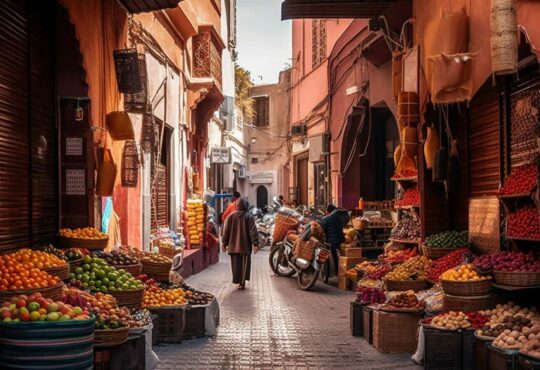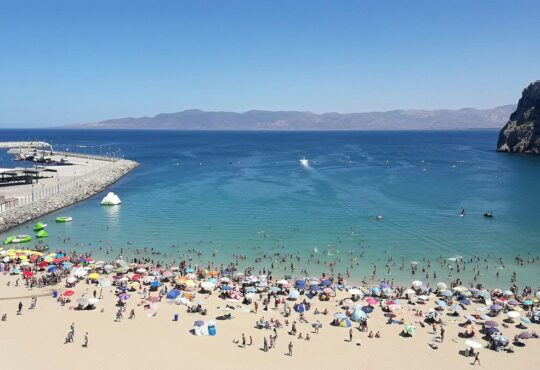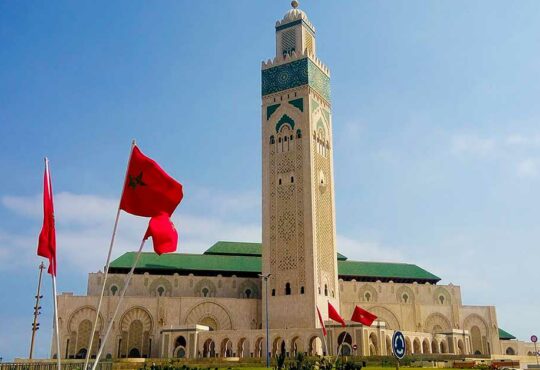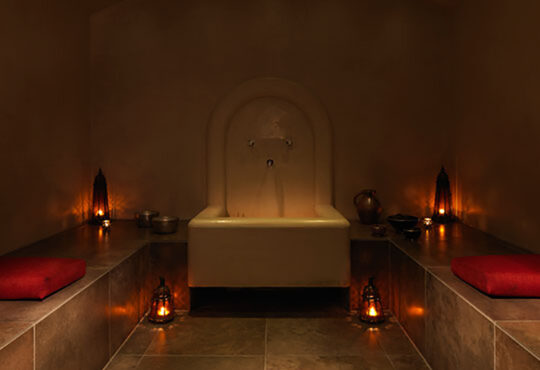1.6K
Morocco was inhabited by different groups of people for thousands of years. Contrary to the popular belief, Moroccans are not merely Arabs. While the current nation has been greatly influenced by Islam and Arabization, there is so much more to Morocco than meets the eye.
Morocco Related Content:
- Population Density: 72 People per square kilometer
- Age Structure: 0-14yrs Males: 5,355,388; Females: 5,156,762 15-64yrs Males 10,013,466; Females: 10,112,060 65+ Males: 692,465; Females: 878,960
- Ethnic Groups: Arab Berber: 99.1% Jewish: 0.2% Other: 0.7%
- Religion: Muslim: 98.7% Christian: 1.1% Jewish: 0.2%
- Literacy Rate: Men: 64.1% Woman: 39.4%
Save this Post for Later!
One can divide the people of Morocco into three major distinct races: Amazigh, Arab and Sahrawi. These are the major groupings of people but it must be acknowledged that there are other, relatively smaller ethnic groups which will be discussed later in this post.
Interestingly, the genetic studies conducted in Morocco reveal that the majority of both Native Arabic and Amazigh speaking people are genetically overwhelmingly Amazigh.
The Amazigh people’s, who are also referred to as the Imazighen,which means the free people, are the oldest known inhabitants and race in Morocco.
Not only Morocco but they are said to be related tribes that are scattered across the length and breadth of North Africa. Their presence goes back thousands of years, according to archeological and linguistic studies.
For the purpose of this article, we refer to the inhabitants of Morocco as the Amazigh and not Berbers since this term is somewhat offensive and not historically accurate.
Within Morocco itself, there are three major Amazigh linguistic groups that correspond to three significant geographical locations. These are the people of the Rif region, who reside in the north of Morocco, around the Rif mountains.
They speak the variety known as Tarifit. In the central or Sous region, where the Tamazight dialect is spoken. Finally, in the south, the Amazing people speak Tachelhit.
The people that consider themselves to be of Arab descent in Morocco amount to a considerable chunk of the local inhabitants of the region. In fact, it is often tough to distinguish, since there has been so much integration between the different people in Morocco.
However, for the purpose of this article, we will define Arabs as the Arabic-speaking people of Morocco who have no perceived direct ancestral links to the Amazigh or any other group in Africa. The Arabs, who originated from the Middle-east, traveled throughout North Africa, beginning in the 7th century C.E.
This would have continued for centuries, since Morocco was also geographically new Muslim Spain, which became a prosperous land that attracted people from all over the Muslim world. Thus, once could even speculate that perhaps there are other non-Arab Muslims who settled in what is now known as Morocco.
This group of people, mainly consisting of Arabic speaking Bedouin tribes whose have both Arab and Amazigh ancestry. They claim to be descendants of the Arab tibe of Beni Hassan and speak what is known as the Hassaniya Dialect of Arabic, which is similar to the that spoken in Mauritania.
The Sahrawi of Morocco, who have become synonymous with their claim to the independent Western Sahara, have been engaged in a longstanding land dispute with the State of Morocco.
Moroccan jews re Jews who live in or are from Morocco. A significant Jewish population migrated from Spain and Portugal after the Spanish Inquisition, to the area and settled among Arab-Berbers.
At its peak in the 1950s, Morocco’s Jewish population was about 300,000 but due to the migration of Moroccan Jews to Palestine they number decreased and they are now a small community distributed on different cities in Morocco including Essaouira and Casablanca and Fez.
The people of Morocco are almost exclusively Muslim. Therefore, the tenets of Sunni Islam dominate the religious, political and social life all across Morocco. Furthermore, Morocco can be described as an Islamic monarchy, where to a large extent, principles of Islamic Law form the foundation of the legal system.
Morocco has had followers of other religions, notably Jews and Christians for centuries. The Christians, who are currently estimated at around 40000, have been present in Morocco since Roman times. In addition, Morocco has always had a thriving Jewish community that has been a part of the nation for generations. However, the population of Moroccan Jews has dwindled from 250000 in1948 to less than 2000 currently.
The official languages in Morocco are Standard Arabic and Amazigh. Other important languages are French, Darija (Moroccan Arabic), and Hassaniya.
Read more: What Languages Do Moroccans Speak?
Moroccans are often mistaken for Europeans, Arabs, Africans, and the list goes on. In fact, for most of my life I was unaware that the villain, Tom Po, from the iconic film Kickboxer (1989), was actually played by the Moroccan actor Michel Qissi.
This is a funny reminder that the perception of ‘race’ and ethnicity is totally subjective. Unfortunately, in this postcolonial world, the ideas of race and skin color are still prevalent. That being said, research shows that the people of Morocco are overwhelmingly Amazigh, ethnically.
Some argue that the Amazigh were originally white from Europe. They cite as evidence the presence of some Moroccans today who have blue eyes and blonde hair. On the other hand, some claim that Amazigh are African and they have their own reasons. I see this discussion as totally insignificant. There are people in Morocco that some people may perceive as white or black. Again, it is all about perception, not facts.
Morocco might not be considered as an important or significant nation on the world stage these days. However, Morocco has always been a force to be reckoned with, It has been influential in many ways. These are some of the Moroccan people that have changed the world as we know it.
Regarded as on of the greatest Muslim military commanders of all time, Tariq Ibn Ziyad is credited with spearheading the Muslim conquest of Spain in the year 711 C.E. He was described as a young Amazigh man who was the first leader to take his Muslim Army accross the sea into what is now known as Gibraltar or originally ‘Jabal Tariq’ The mountain of Tariq, as it was known in Arabic.
His bravery and valor on the battlefield are well documented. It is said that he defeated a much larger army and paved the way for the great civilization which became known as Al Andalus.
The legendary scholar and explorer known as Ibn Battuta, is said to have travelled more than anyone else in pre-modern history. He single-handedly almost covered the entire globe over a period of 30 years. He was born in 1304 in Tangier. At the age of 21, he left his home to perform Haj, the obligatory pilgrimage in Mecca. This was the beginning of one of the most epic journeys in history. The young Ibn Battuta only returned home after 23 years. His travels and stories are well known and his achievements were unprecedented at the time.
A giant in the world of the sciences and philosophy, Ibn Rushd was born in the magical city of Cordoba in 1126. He is considered to be one of the most influential thinkers and writers of his time, having written several magnificent works in the fields of science, philosophy, psychology, astronomy, medicine, mathematics, law, physics and linguistics. One of his most notable works, which earned him international recognition, was his commentary of Aristotle. Ibn Rushd was said to be of Amazigh (Berber) descent and even served as a chief judge and court physician for the Al Mohad State.
Yusuf Ibn Tashfin was a renowned military leader who had great success in spreading the dominance of the Almoravid Empire over North-West Africa. He also served as the leader of the Almoravids during their peak, in the 11th century, when he sacked the corrupt Muslim sultans who were running a mock in Spain and united the Iberian Peninsula to form part of the Almoravid State.
While Ibn Tashfin was not the first Moroccan leader to have success in Europe, he was the first to extend the rule of the Morroccan State deep into European territory. Previously, the territory of Spain was under the control of the Muslim Caliphate. Ibn Tashin is celebrated as a great man who lived during a great period, in which the state of Morocco was superior to its northern neighbours in military strength and technological advancement.
One of the great cartographers and travelers of his time, Muhammad al-Idrisi took 18 years to draw the most accurate representations of the world map in the 12th century. An avid traveler himself, Al Idrissi relied on some of his own knowledge and intuition to correct some of the inaccurate maps that were circulating at the time. However, to complete his main work, he had to commission his officers to travel all over the known world and document the landscapes. They would then return and submit their accounts, which he used to draw his world map.
Nawal El Moutawakel was the first African woman of color and also the first Muslim woman, ever, to win an Olympic Gold medal. She shocked the world and her home-country Morocco when she grabbed top spot in the 400m Woman’s Hurdles event in the 1984 U.S.A. Summer Olympic Games. She is an inspiration to women in Morocco and all over the world.
Hicham El Guerrouj is not only the greatest Moroccan athlete ever but is regarded as the greatest middle-distance runner of all time. He currently holds the world record times for the 1500m and 1 mile events. Until 2019, he also held the world record times for the indoor 1500m and 1 mile events. El Guerrouj won the 1500m in the world championships 4 consecutive times in 1997, 1999, 2001, 2003,respectively. He is known as the best of the best and his achievements and wins go on and on. In 2014, he was inducted into the IAAF Hall of Fame.





